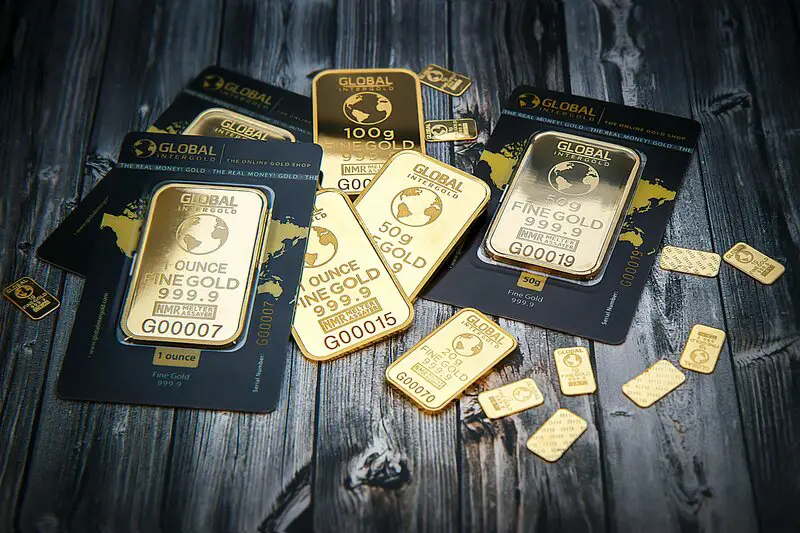Gold has long been considered a "safe haven" asset—a form of protection against turmoil in financial markets, geopolitical instability, and economic downturns. But why exactly does gold enjoy this status? And how has it performed historically in times of crisis?
This article explores the psychological, economic, and historical reasons why investors turn to gold during turbulent times—and what that means for your investment strategy.
What Is a Safe Haven Asset?
A safe haven asset is one that tends to retain or even increase in value during periods of market volatility, uncertainty, or crisis. These assets are typically characterised by stability, liquidity, and a lack of correlation with riskier investments like equities or real estate.
Gold ticks all of these boxes:
- It has intrinsic value
- It's globally recognised
- It's not directly tied to any one country's economy or currency
The Psychology Behind Gold's Appeal
Gold's safe haven status isn't purely financial—it's also deeply psychological. For centuries, gold has symbolised wealth, security, and permanence. During times of crisis, investors often seek something tangible and time-tested. Paper assets can seem abstract or unreliable, while gold offers a sense of solidity and tradition.
Historical Performance of Gold During Crises
Let's take a look at some historical examples to understand how gold has behaved during major global events:
1. The 2008 Global Financial Crisis
While global equities and property markets crashed, gold held steady and then surged. Between 2007 and 2011, gold rose from around $650/oz to over $1,900/oz. Investors fled riskier assets and sought safety in gold.
2. COVID-19 Pandemic (2020)
Initially, gold dipped in the early days of the pandemic as investors rushed to liquidate assets. But it quickly rebounded and reached a record high of over $2,000/oz in August 2020. The combination of uncertainty, central bank stimulus, and low interest rates fuelled gold's appeal.
3. Geopolitical Tensions and War
Gold prices often rise during geopolitical tensions. For example, during the Gulf War (1990–91), the Iraq War (2003), and more recently during Russia's invasion of Ukraine (2022), gold experienced upward pressure as markets braced for instability.
4. Brexit and Political Instability
During the Brexit vote in 2016, investors sought refuge in gold as the pound dropped and political uncertainty loomed. Gold prices rose sharply in GBP terms.
| Crisis Event | Time Period | Gold Performance | Key Driver |
|---|---|---|---|
| Global Financial Crisis | 2007-2011 | $650 to $1,900/oz | Flight to safety, QE policies |
| COVID-19 Pandemic | 2020 | Record high $2,000+/oz | Uncertainty, stimulus, low rates |
| Gulf War | 1990-91 | Significant rise | Geopolitical instability |
| Brexit Vote | 2016 | Sharp rise (GBP terms) | Political uncertainty, currency weakness |
| Russia-Ukraine War | 2022 | Upward pressure | War, sanctions, energy crisis |
Key Drivers That Make Gold a Safe Haven
1. Lack of Counterparty Risk
Unlike stocks or bonds, gold is a physical asset with no issuer. There's no default risk—your gold doesn't rely on a company or government's ability to pay.
2. Liquidity and Universality
Gold is globally traded, easily bought or sold, and universally accepted as a store of value. This makes it especially attractive in crises when other assets may become illiquid.
3. Limited Supply
Gold is scarce and difficult to mine, which helps preserve its value. In contrast, fiat currencies can be printed endlessly—leading to fears of inflation or currency debasement during economic upheaval.
4. Inverse Relationship with Risk Assets
Gold often moves in the opposite direction of equities. When markets fall, gold tends to rise—providing a natural hedge within diversified portfolios.
Limitations of Gold as a Safe Haven
While gold has many qualities that make it appealing in times of crisis, it's not without risks:
No Yield
Gold doesn't pay dividends or interest, which can be a disadvantage in a strong economy.
Short-Term Volatility
While gold may rise during crises, it's still subject to short-term swings.
Opportunity Cost
Holding too much gold means missing out on potentially higher returns from equities when markets recover.
Strategic Use of Gold in Portfolios
If you're considering gold as part of your crisis-proof investment strategy, here are a few tips:
1. Use Gold as a Hedge
Portfolio Allocation
Allocating 5–15% of your portfolio to gold can help reduce overall volatility and protect against downside risk.
2. Diversify Within Gold Investments
You can hold gold in various forms:
Physical Bullion
Coins and bars offer direct ownership but require secure storage
Gold-Backed ETFs
Easy to trade, lower storage costs, but no physical ownership
Gold Mining Stocks
Potential for higher returns but also higher risk and correlation with equities
3. Stay Informed
Key Indicators to Monitor
Track economic indicators like inflation, interest rates, central bank policy, and geopolitical developments. These can signal when gold might become more attractive.
| Indicator | Gold Positive Signal | Gold Negative Signal |
|---|---|---|
| Inflation | Rising inflation rates | Low, stable inflation |
| Interest Rates | Falling or negative real rates | Rising real interest rates |
| Geopolitics | Wars, tensions, instability | Peace, stability, cooperation |
| Currency Strength | Weakening major currencies | Strong, stable currencies |
| Market Sentiment | Fear, uncertainty, volatility | Confidence, bull markets |
Final Thoughts
Gold's reputation as a safe haven asset is grounded in centuries of trust, proven performance in turbulent times, and its fundamental properties as a store of value. While it's not a magic shield against all risk, gold plays a valuable role in protecting wealth when the world feels uncertain.




